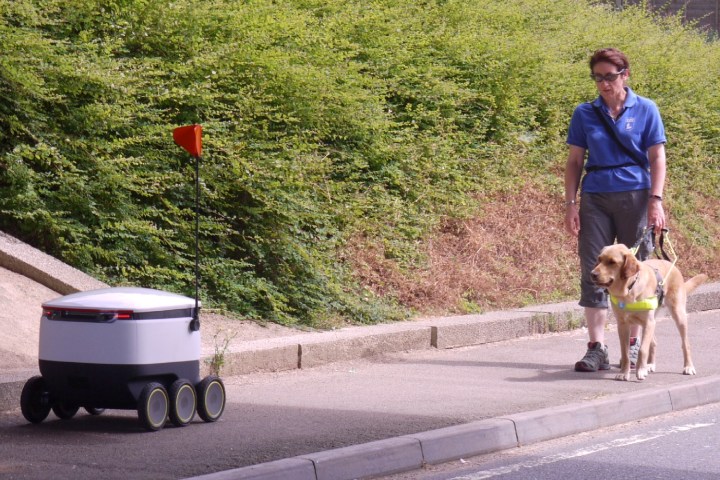
Whether it’s delivery robots, manufacturing robots, or robots capable of providing emotional and physical support to people who need it, it’s increasingly apparent that robots have moved out of the labs and into the real world. For that reason, a whole lot of research has rightfully explored interactions between humans and robots to ensure that such exchanges can take place safely and, frankly, without scaring the bejesus out of ordinary people. But what about the other life-forms that robots are likely to encounter?
To investigate that question, the Guide Dogs for the Blind Association charity recently partnered with autonomous delivery robot company Starship Technologies. The aim of the partnership is to carry out a preliminary study into the impact that autonomous technologies are likely to have on guide dogs, which perform an invaluable service for blind and visually impaired people.
“We wanted to ensure guide dogs would not react differently to our robots than anything else encountered on the pavement,” Henry Harris-Burland, vice president of marketing at Starship, told Digital Trends. “The guide dogs were put in a variety of different situations with delivery robots coming from different angles on the pavement, including road crossings. The guide dogs were being walked by visually impaired people.”
In most studies, of course, researchers are hoping to observe something in the way of a development that’s not been seen before. In this case, however, the outcome was, fortunately, uneventful: The guide dogs reacted calmly to the robots across all scenarios. This is in line with previous findings from Starship, whose robots have come into contact with more than 600,000 non-working dogs around the world.
“We did not know what to expect before this trial, so we are happy with the results, and we’re looking forward to collaborating with visually impaired people for more trials in the future,” Harris-Burland said.
“Starship is the only company in the world doing tens of thousands of commercial autonomous deliveries, operating seven days a week, and therefore we aim to set the standard in how technology companies should act when introducing their tech to new communities around the world,” he said. “To date, this has been a great success, with social acceptance among the communities we operate in very positive.”


